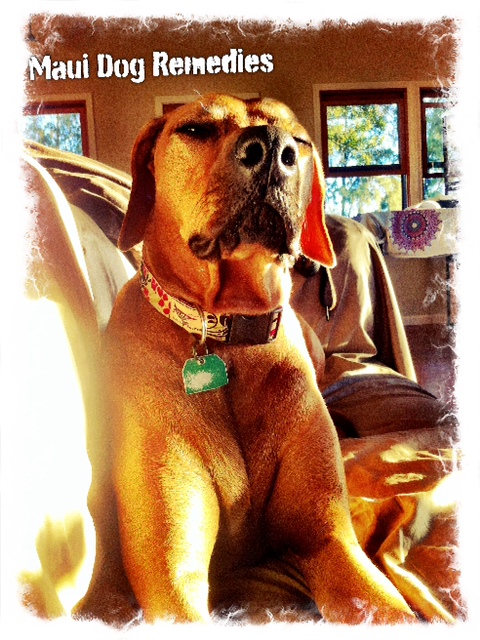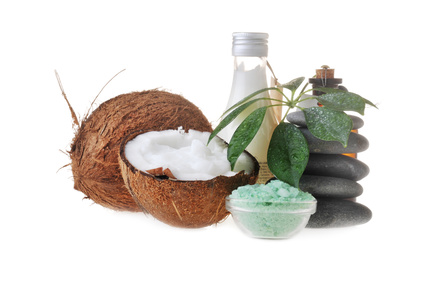Again, yesterday I was asked what to do about hot spots on dogs.
Quick answer.
Two things:
![]() Remove grains from their diet.
Remove grains from their diet.
Most vets will prescribe antibiotics which may be a temporary band-aide, possibly some other type of oitment until your dog becomes resistant to the antibiotics. As well, it’s not addressing healing from the inside out which is how hot spots in dogs truly need to be treated.
Why Coconut Oil for Hot Spots in Dogs?
 Coconut oil consists of more than 90% saturated fats, with traces of few unsaturated fatty acids, such as monounsaturated fatty acids and polyunsaturated fatty acids. Most of the saturated fats in coconut oil are Medium Chain Triglycerides (MCTs). The main component (more than 40%) of MCTs is lauric acid, followed by capric acid, caprylic acid, myristic acid and palmitic. Coconut oil also contains about 2% linoleic acid (polyunsaturated fatty acids) and about 6% oleic acid (monounsaturated fatty acids).
Coconut oil consists of more than 90% saturated fats, with traces of few unsaturated fatty acids, such as monounsaturated fatty acids and polyunsaturated fatty acids. Most of the saturated fats in coconut oil are Medium Chain Triglycerides (MCTs). The main component (more than 40%) of MCTs is lauric acid, followed by capric acid, caprylic acid, myristic acid and palmitic. Coconut oil also contains about 2% linoleic acid (polyunsaturated fatty acids) and about 6% oleic acid (monounsaturated fatty acids).
 Most of the coconut oil benefits come from the MCTs. Lauric acid in coconut oil has antibacterial, antiviral, and anti-fungal properties. Capric and caprylic acid have similar properties and are best known for their anti-fungal effects.
Most of the coconut oil benefits come from the MCTs. Lauric acid in coconut oil has antibacterial, antiviral, and anti-fungal properties. Capric and caprylic acid have similar properties and are best known for their anti-fungal effects.
In addition, MCTs are efficiently metabolized to provide an immediate source of fuel and energy, enhancing athletic performance and aiding weight loss. In dogs, the MCTs in coconut oil balance the thyroid, helping overweight dogs lose weight and helping sedentary dogs feel energetic. It also is huge in healing skin issues.
Healing Dogs with Coconut Oil
Use coconut oil internally and externally. When starting your dog on coconut oil start with 1/2 to 1 teaspoon a day and increase to 2-4 teaspoons over weeks depending on dog size. Benefits include:
- Clears up skin conditions such as eczema, flea allergies, contact dermatitis, and itchy skin
- Powerful antibacterial, antiviral, and anti-fungal agents that prevent infection and disease
- Reduces allergic reactions and improves skin health
- Regulates and balance insulin and promotes normal thyroid function
- Helps prevent or control diabetes
- Helps reduce weight, increases energy
- Aids in arthritis or ligament problems
- Improves coats to sleek and glossy, and deodorizes dog odor
- Prevents and treats yeast and fungal infections, including candida
- Disinfects cuts and promotes wound healing
- Applied topically, promotes the healing of cuts, wounds, hot spots, dry skin and hair, bites and stings
 Feed A Grain Free Diet To Resolve Hot Spots
Feed A Grain Free Diet To Resolve Hot Spots
A good friend and dog training colleague posted this on Facebook:
Last week, I was talking to a customer in my store, who told me that his uncle drives a truck in the prairies, whose job it is to spray wheat crops with one of Monsanto’s herbicides, he’s required to wear full (head to toe) gear. Nothing in the fields (he sprays) lives, except the GM wheat. As a result, he won’t eat wheat, and he’s apparently not even a health conscious guy, but he still won’t eat wheat, cuz he knows that what he spraying it with, is highly toxic.
That was enough for me to realize I don’t really need to feed my dogs grain that comes from who knows where but most likely not the organically grown fields. As well I don’t really want to feed it to myself or anyone of my loved ones!
There are many benefits of feeding grain free but the biggest one is many dogs have grain allergies. They are naturally meat eaters! Dogs with grain allergies will often have ear infections, excessive scratching, licking of paws, and hot spots. Dogs with these issues will benefit greatly because a grain free food removes these allergens from the diet.
Need a little dog training advice? Get 5 Free Online Dog Training Videos from some of the best online dog trainers in the world.
Get help with 34 of the most common dog training problems by getting access to this online dog training video library!
Like this? Share it!


Pam in Texas
June 12, 2014 at 10:18 am (11 years ago)I’ve JUST learned this the hardway. Had my longhaired dachshund on grain free diet all his life – 4 years old now. He went to live with my boyfriend for the past 30 days while I dog sat a Husky – I couldn’t mix the two. My boyfriend has been feeding my dog Hills Science GRAIN/Filler dog food for the past 30 days!! OMG…my poor dachshund is not in the throws of some horrible skin allergies/constant itching/raw hot spots etc…
I just brought him home last night and have started him back on grain free and added in coconut oil internally and externall to his hot spots. Today is day 1 and I hope he gets some refief soon.
He LOVED the coconut oil off the spoon – thought it was the cat’s meow!! So fingers crossed.
Came across your article while I was researching – it’s just what I needed to hear.